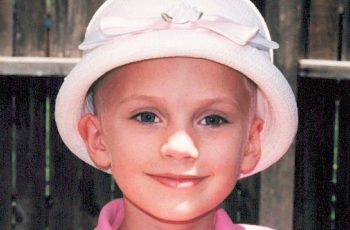Glioblastoma (GBM)
What is glioblastoma (GBM)?
A glioblastoma (GBM) is an especially aggressive type of high-grade glioma that arises from glial cells, the brain’s supportive tissue. GBMs are aggressive tumors that rapidly infiltrate nearby healthy brain tissue, which makes them very difficult to treat. They usually occur outside the brainstem and most commonly in the cerebral hemispheres.
About 65% of pediatric glioblastoma tumors occur in the cerebral hemispheres, which control higher functions such as speech, movement, thought, and sensation. GBMs can also develop in the part of the brain that identifies sensations like temperature, pain, and touch, as well as the region of the brain that controls balance and motor function.
Glioblastoma accounts for about 10 percent of pediatric brain tumors and occurs equally in boys and girls. These types of tumors are the third most common brain tumor in children, but because of their aggressiveness and resistance to treatment, they cause the most deaths.
GBMs occur with increased frequency in children with certain genetic syndromes, including neurofibromatosis 1 and Li-Fraumeni syndrome.
The overall 5-year survival rate for glioblastoma is 5-10%.
What causes glioblastoma? Who is affected?
Glioblastoma tumors in children can occur at any age. Teenagers most commonly get tumors of the cerebral hemispheres, while glioblastomas lower in the brain are more common in younger children. The cause of glioblastoma is not known.
Unfortunately, the prognosis for GBM remains very poor. Generally, more complete surgical resection of the tumor results in a great chance for survival.
Where are the symptoms of glioblastoma?
Most GBM symptoms result from increased pressure within the head, while others relate to the location of the tumor, rate of growth, and the associated inflammation.
Symptoms can develop over a few weeks to months or have a sudden onset. The most common symptoms are headaches and lethargy, seizures (depending on tumor type and location), and compression of surrounding brain structures (which can cause weakness, other motor dysfunction, hormonal abnormalities, or changes in behavior and thought processes.
How is glioblastoma treated?
The first step in treatment is almost always surgery, with the goal of removing as much of the tumor as possible. Sometimes the location of the tumor or other factors may make it impossible for the neurosurgeons to remove completely.
Radiation therapy uses high-energy waves or other types of radiation to kill cancer cells or stop them from growing. This is important to control the local growth of the tumor, and helps increase survival rates and duration in high-grade gliomas.
Chemotherapy uses powerful medication to kill cancer cells or stop them from growing and making more cancer cells. Chemo is injected or given orally so that it can travel throughout the body. Combination therapy is when more than one chemotherapy drug is used at one time. One chemotherapy regimen that can be useful in extending survival in some cases of pediatric glioblastoma is temozolomide and CCNU.





